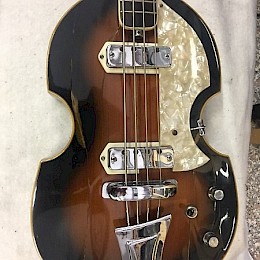

The December 1935 Metronome magazine ad which introduced the Emperor, shows both the Emperor and the Super De Luxe with a tailpiece very similar in design to the style used on early Gibson Super 400 guitars see picture. More detailed info on Epiphone trapeze tailpieces, see: Trapeze tailpiece evolution 1931–1956 It is on a De Luxe with checkerboard binding, of which we have also only one example in our database. In the early 1930’s, the strings were attached to the crossbar with the ball ends toward the neck and wrapped over the bar.īy 1934, the strings were attached to the crossbar with the ball ends pointed toward the bottom of the instrument and the strings did not wrap over the crossbar. The plating was gold on the uper-end guitars and nickel on the lesser instruments. The trapeze tailpiece was used on all Masterbilt models until the mid 1930’s.

70-74Įpiphone used over the years six different tailpieces for their achtop guitars.

Fred, The House of Stathopoulo, 1996, pp. They don’t necessarily show whether they originaly belong to the instrument they are on. Therefore the pictures below only show types of tailpieces Epiphone used over the years. Since they don’t last such a long period, many of the historic guitars are most likely not equipped with their original tailpieces anymore. 1932), but “metal and other parts that recieve wear excepted” (cat. NOTE: Epiphone guaranteed “All models for the life of the instrument” (cat.


 0 kommentar(er)
0 kommentar(er)
